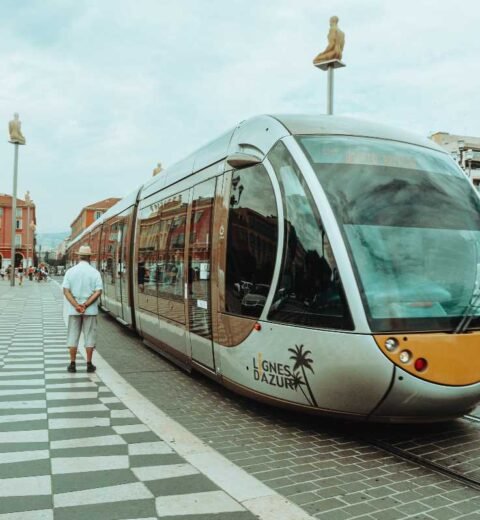Planning a trip to Germany in 2026? With its rich history, vibrant culture, stunning landscapes, and world-class cities, Germany offers something for every traveler.
Whether you’re dreaming of exploring fairy-tale castles, indulging in hearty cuisine, or diving into the festive atmosphere of Oktoberfest, this guide will help you craft the perfect itinerary.
Follow these steps to ensure your trip is seamless, memorable, and tailored to your interests.
Enjoy Your Event Stress-Free with Euro Travelo
Planning a trip to attend a festival, concert, or business event in Europe can be overwhelming—tickets, travel, accommodation, and local logistics all take time and effort. Euro Travelo makes it simple by providing everything you need through one trusted company. You save time, avoid stress, and enjoy a seamless experience from start to finish.
Why Choose Euro Travelo:
- Secure and easy ticket booking for concerts, festivals, theaters, and business events.
- Complete travel planning including flights, trains, and local transportation.
- Accommodation arrangements near event venues, tailored to your needs.
- Convenient local transfers, from airport pickups to private shuttles.
- On-site concierge support to help you navigate venues and schedules.
- Custom itineraries and experience packages combining multiple events, tours, and activities.
- Secure payment process, making it safe and convenient to book all services online.
- Flexibility: even if you need only one service, we can assist individually.
Step 1: Define Your Travel Goals
Before diving into logistics, clarify what you want from your trip. Germany is diverse, so narrowing your focus will shape your itinerary. Ask yourself:
- Are you drawn to history and culture? Visit Berlin’s museums or Munich’s historic sites.
- Craving nature? Explore the Black Forest or the Bavarian Alps.
- Food and drink enthusiast? Plan around beer festivals or wine regions like the Rhine Valley.
- Traveling with family? Look into kid-friendly attractions like Europa-Park.
Consider the season, too. Summer (June–August) offers warm weather and festivals, while winter (December–February) brings magical Christmas markets. Spring and fall are ideal for mild weather and fewer crowds.
Step 2: Set a Budget
Germany is moderately priced compared to other Western European countries, but costs can add up. Here’s a rough breakdown for 2026:
- Accommodation: €50–150/night for mid-range hotels; hostels start at €20, while luxury hotels can exceed €200.
- Food: €10–20 per meal at casual restaurants; street food like currywurst costs €3–5.
- Transport: Train tickets (Deutsche Bahn) range from €20–100 depending on distance and booking time.
- Attractions: Museum entries cost €5–15; major sites like Neuschwanstein Castle are around €15.
Plan for daily expenses of €100–200 per person for a mid-range trip. Book flights and accommodations early to snag deals, especially for peak summer or Oktoberfest season.
Step 3: Choose Your Destinations
Germany’s regions offer distinct experiences. Here’s a curated list of must-visit spots for 2026:
- Berlin: The capital blends history (Brandenburg Gate, Berlin Wall) with modern vibes (street art, nightlife). Don’t miss Museum Island.
- Munich: Home to Oktoberfest (late September–early October 2026), Bavarian culture, and the stunning Nymphenburg Palace.
- Hamburg: A port city with the Elbphilharmonie concert hall and vibrant Speicherstadt warehouse district.
- Cologne: Famous for its towering cathedral and lively Carnival (February 2026).
- Black Forest: Ideal for hiking, cuckoo clocks, and charming towns like Freiburg.
- Romantic Road: A scenic route through medieval towns like Rothenburg ob der Tauber and fairy-tale castles.
For a 7–10 day trip, focus on 2–3 regions to avoid rushing. A sample itinerary could be Berlin (3 days), Munich (3 days), and a day trip to Neuschwanstein Castle.
Step 4: Plan Your Transportation
Germany’s transport system is efficient and traveler-friendly.
- Flights: Major airports like Frankfurt (FRA), Munich (MUC), and Berlin (BER) connect globally. Book 3–6 months in advance for deals.
- Trains: Deutsche Bahn’s high-speed ICE trains are fast and reliable. Buy tickets early for discounts or consider a German Rail Pass for flexibility.
- Regional Transport: Buses, trams, and U-Bahn/S-Bahn systems make city travel easy. Day passes cost €5–10.
- Car Rental: Great for rural areas like the Black Forest or Romantic Road. Expect €30–50/day plus fuel.
Download the DB Navigator app for train schedules and tickets. If traveling across Europe, consider a Eurail Pass.
Step 5: Book Accommodations
Germany offers diverse lodging options:
- Hotels: Chains like Ibis or Marriott offer consistency; boutique hotels add charm.
- Hostels: Budget-friendly, especially in Berlin and Munich (e.g., Wombat’s or Generator).
- Airbnb: Ideal for longer stays or rural areas.
- Pensions/Guesthouses: Affordable, cozy options in smaller towns.
Book 3–6 months ahead for peak seasons, especially for Oktoberfest or Christmas markets. Central locations save time but cost more.
Step 6: Craft Your Itinerary
Balance iconic sites with off-the-beaten-path gems. Here’s a sample 10-day itinerary:
- Days 1–3: Berlin
- Days 4–6: Munich
- Days 7–8: Romantic Road
- Explore Rothenburg ob der Tauber and Würzburg.
- Days 9–10: Black Forest
- Hike in Freiburg, visit Triberg for cuckoo clocks.
Adjust based on your pace and interests. Allow downtime to soak in local vibes at beer gardens or cafés.
Step 7: Prepare for Culture and Logistics
- Language: English is widely spoken in cities, but learning basic German phrases (e.g., “Danke” for thank you) is appreciated.
- Currency: Euro (€). Cards are accepted, but carry cash for smaller shops or markets.
- Visas: Check Schengen visa requirements based on your nationality. Most visitors from the US, Canada, or Australia get a 90-day visa-free.
- Weather: Pack layers for unpredictable weather, especially in spring/fall. Comfortable shoes are a must for cobblestone streets.
- Events in 2026: Oktoberfest (Munich, late September), Carnival (Cologne, February), and Christmas markets (December) require early planning.
Step 8: Savor German Cuisine
Germany’s food scene is hearty and diverse:
- Must-Try Dishes: Bratwurst, Schnitzel, Pretzels, Sauerkraut, Black Forest cake.
- Drinks: Try local beers (Weissbier in Bavaria, Kölsch in Cologne) or Riesling wines.
- Dining Tips: Tipping is 5–10%, rounded up. Beer gardens are casual; reservations are wise for upscale restaurants.
Explore local markets like Munich’s Viktualienmarkt for fresh treats.
Step 9: Stay Connected and Safe
- Wi-Fi: Available in most hotels, cafés, and public spaces. Consider a prepaid SIM or eSIM for data (€10–20 for 1–2 GB).
- Safety: Germany is generally safe, but stay vigilant in crowded areas like train stations.
- Emergency Numbers: 112 for emergencies, 110 for police.
Step 10: Pack Smart and Go!
Pack for the season and activities (hiking boots for the Black Forest, festive attire for Oktoberfest). Download offline maps (e.g., Google Maps) and translation apps. Most importantly, embrace spontaneity—Germany’s charm often lies in unexpected discoveries, like a hidden beer garden or a local festival.
Budget Comparison for a 7-Day Trip to Germany in 2026
Plan your perfect Germany trip with this budget breakdown for budget, standard, and luxury travel styles.
| Category | Budget (€) | Standard (€) | Expensive (€) |
| Flights (Round-Trip) | 300–500 (Book 6 months early, economy) | 600–800 (Economy, flexible dates) | 1000–2000 (Business class, major hubs) |
| Accommodation (7 nights) | 140–210 (Hostels, shared dorms, €20–30/night) | 350–560 (Mid-range hotels, €50–80/night) | 1050–2100 (Luxury hotels, €150–300/night) |
| Transportation (in Germany) | 100–150 (Regional trains, group tickets) | 200–300 (ICE trains, some taxis) | 400–600 (Car rental, premium trains) |
| Food & Drinks | 105–140 (Street food, markets, €15–20/day) | 210–280 (Casual restaurants, €30–40/day) | 350–490 (Fine dining, €50–70/day) |
| Attractions & Activities | 50–80 (Free sites, select museums) | 100–150 (Museums, guided tours) | 200–300 (Private tours, special events) |
| Miscellaneous (SIM, tips, etc.) | 30–50 (Prepaid SIM, minimal tips) | 50–80 (SIM, moderate tips) | 100–150 (eSIM, generous tips) |
| Total (per person) | 725–1030 | 1510–2178 | 3100–4640 |
Final Tips for 2026
- Sustainability: Use public transport and reusable water bottles to reduce your footprint.
- Local Etiquette: Germans value punctuality and directness. Respect quiet hours (e.g., Sundays).
- Travel Insurance: Recommended for medical emergencies or trip cancellations.
With thoughtful planning, your 2026 trip to Germany will be a perfect blend of adventure, culture, and relaxation. Prost to an unforgettable journey!
FAQs
What is the best time to visit Germany in 2026?
The best time depends on your preferences. Summer (June–August) is great for warm weather and festivals like Oktoberfest (late September–early October 2026). Winter (December–February) brings Christmas markets and lower costs outside peak events. Spring and fall offer mild weather, fewer crowds, and beautiful scenery, ideal for sightseeing and outdoor activities.
How much should I budget for a trip to Germany in 2026?
For a 7-day trip, budget travelers can expect €725–1030 (hostels, street food), standard travelers €1510–2178 (mid-range hotels, casual dining), and luxury travelers €3100–4640 (high-end hotels, fine dining). Costs vary by season and destination. Booking flights and accommodations early saves money.
Do I need a visa to travel to Germany in 2026?
Travelers from the US, Canada, Australia, and many other countries can stay visa-free for up to 90 days in the Schengen Area. Others may need a Schengen visa. Always check specific entry requirements for your nationality well in advance.
What are the must-visit destinations in Germany for 2026?
Top spots include Berlin for history and culture, Munich for Bavarian traditions and Oktoberfest, Hamburg for its port and modern vibe, Cologne for its cathedral and Carnival (February 2026), and the Black Forest for nature. The Romantic Road features medieval towns and castles like Neuschwanstein.
How can I get around Germany efficiently?
Germany’s transport is efficient. High-speed ICE trains (Deutsche Bahn) connect cities (€20–100 if booked early). City buses, trams, and U-Bahn/S-Bahn cost €5–10/day. Renting a car (€30–50/day) suits rural areas like the Black Forest or Romantic Road. A German Rail Pass offers flexibility.




